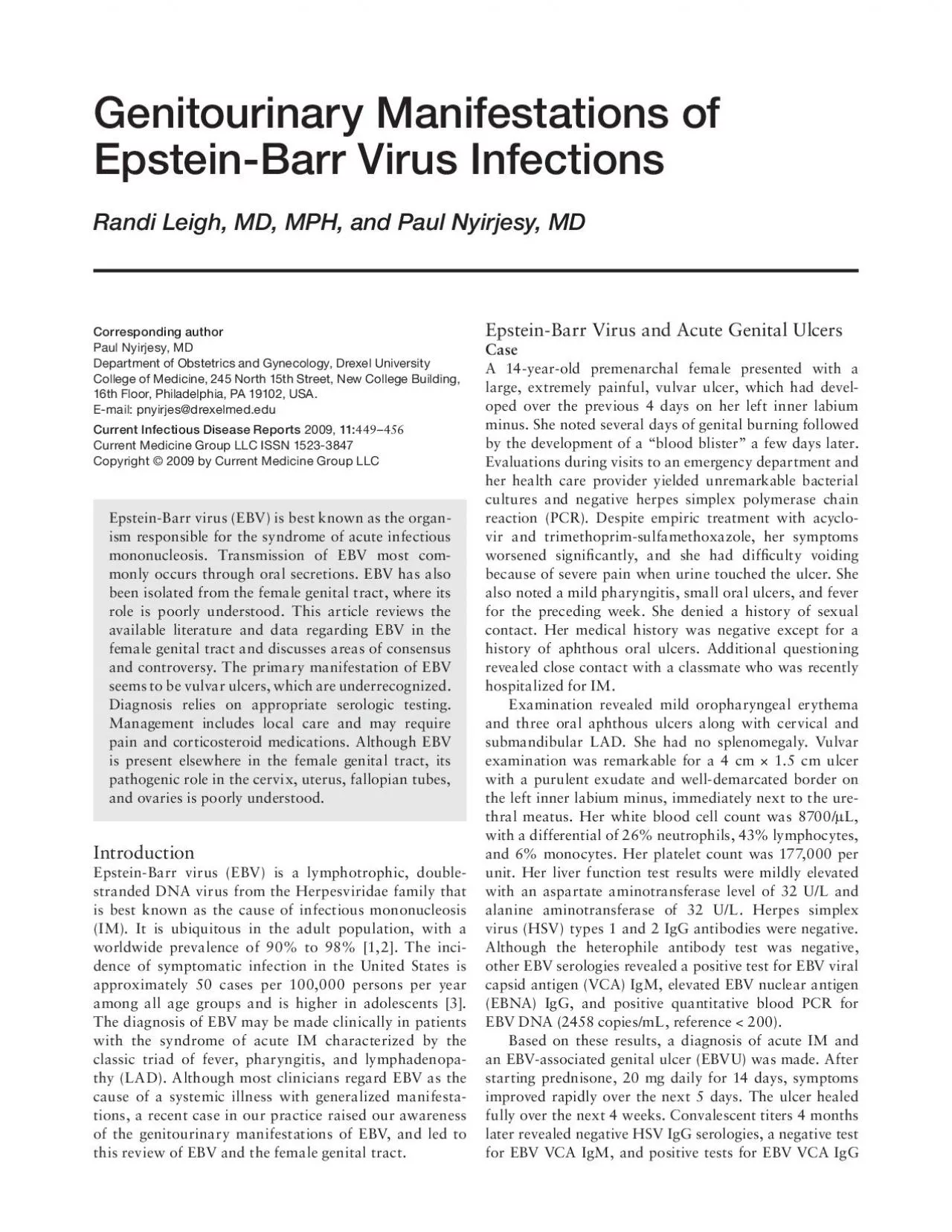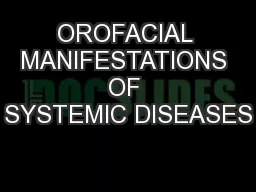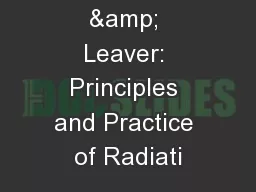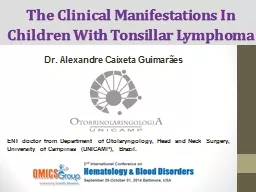PDF-Genitourinary Manifestations of EpsteinBarr Virus InfectionsRandi Lei
Author : leah | Published Date : 2022-09-07
450 Urinary Tract Infectionsand EBNA One year after initial presentation the patient had a recurrence of her ulcer which responded within a few days to a 7day course
Presentation Embed Code
Download Presentation
Download Presentation The PPT/PDF document "Genitourinary Manifestations of EpsteinB..." is the property of its rightful owner. Permission is granted to download and print the materials on this website for personal, non-commercial use only, and to display it on your personal computer provided you do not modify the materials and that you retain all copyright notices contained in the materials. By downloading content from our website, you accept the terms of this agreement.
Genitourinary Manifestations of EpsteinBarr Virus InfectionsRandi Lei: Transcript
Download Rules Of Document
"Genitourinary Manifestations of EpsteinBarr Virus InfectionsRandi Lei"The content belongs to its owner. You may download and print it for personal use, without modification, and keep all copyright notices. By downloading, you agree to these terms.
Related Documents














